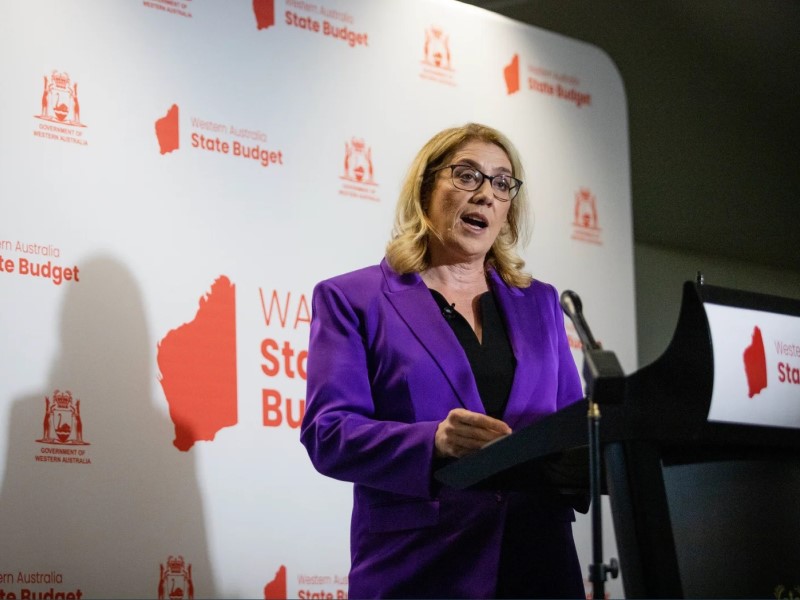A $200 million critical minerals shared processing facility will be bankrolled by the Western Australian and federal governments in an effort to move Australian operations further across a growing value chain for industries like battery production.
The common user facility project will be led by the Minerals Research Institute of Western Australia (MRIWA), Thursday’s state budget revealed ahead of a likely announcement by the Albanese government, which will need to tip in half the funding.

Western Australia Treasurer Rita Saffioti handed down the state’s 2024-25 budget on Thursday, declaring the state is on-track for a sixth consecutive operating surplus this financial year at $3.2 billion, as well as forecasting a $2.6 billion operating surplus next financial year.
However, net debt is expected to grow to $32.7 billion next financial year, up from $28.6 billion this financial year.
In her budget speech, Ms Saffioti said that “building capacity in science, innovation, and technology to improve the competitiveness of our industries” is key to fuelling the state’s economic growth.
This includes a $100 million commitment to the Critical Minerals Advanced Processing Common User Facility, although this is subject to a matched commitment from the Commonwealth government.
In a consultation paper to refresh the Western Australian government’s battery and critical minerals strategy released at the end of 2023, it was noted that MRIWA and the Future Battery Industries Cooperative Research Centre (FBICRC) were preparing a business case for a common user processing facility.
The proposal in the consultation paper would see the FBICRC’s cathode precursor production pilot plant converted into a Battery and Critical Minerals Institute featuring equipment and resources that support upstream and midstream activities.
The FBICRC recently received a $14 million grant from the federal government to run the Powering Australia Industry Growth Centre. The investment is a part of the incoming national battery strategy, although there is not yet a timeline for its release.
It would focus on research and training in addition to commercialisation of emerging products, according to the consultation paper.
The budget also details some additional technology and innovation spending, including $15.3 million to establish a new Perth Health Innovation Hub.
The hub will receive the bulk of its funding this financial year and is funded to 2026-27. It is listed as a separate budget item to the WA Life Sciences Innovation Hub run by MTPConnect and the Royal Perth Hospital Innovation Hub known as Synapse.
The Western Australian budget also includes $7.2 million for startup accelerator Founder Factory, announced in April. The Department of Jobs, Tourism, Science, and Innovation will also spend $22.7 million over the forward estimates on work to support the Diversify WA plan, the state’s industry diversification effort.
There is also $1 million “to finalise and implement the Digital Industries Acceleration Strategy”, which closes to public consultation on Friday. It is expected to include a commitment to improving the state’s digital readiness index score, which places Western Australia fifth out of the eight Australian states and territories.
Funding for the state’s startup and innovation focused New Industries Fund remains unchanged, and is expected to spend its last $7.2 million this financial year.
Funding through the $285 million Investment Attraction Fund – supporting priority areas like energy, defence industries, space industries, and health and medical life sciences – has been spread out over the forward estimates as the actual amount of grant funding given to businesses this financial year is expected to be $90 million less than budgeted for.
Next financial year the fund is expected to award $73 million in grants.
Details of when the Future Health Research and Innovation Fund will commit $247 million over the forward estimates is also included, starting with $51.7 million this financial year.
Ms Saffioti also noted in her speech that the budget allocates $10 million to supporting the local space industry over the forward estimates, although it does not include any new programs.
Do you know more? Contact James Riley via Email.

